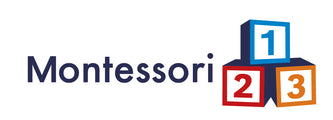
Advanced Roman Numeral Cards
The Romans were traders and needed a way to keep track of their goods. They developed a system of recording numbers in 500 B.C. that we still use t...
View full details
The Romans were traders and needed a way to keep track of their goods. They developed a system of recording numbers in 500 B.C. that we still use t...
View full details
The Romans were traders and needed a way to keep track of their goods. They developed a system of recording numbers in 500 B.C. that we still use t...
View full details
There are countless learning opportunities in reading, math and history to be had if you do a daily calendar routine with your children. This set i...
View full details
This set includes a working chart and 11 charts for matching the various values of each coin with other coins as well as one blank chart to be used...
View full details
These cards introduce the names and values of coins and will help the youngest child learn about money. This set includes 3 Part Cards with photogr...
View full details
The complete set of all 5 of our geometry nomenclature sets. Contains: Lines, Angles, Triangles, Solids, and Shapes (Cabinet). Ships: printed o...
View full details
This set includes all the basic addition (red), subtraction (green), multiplication (yellow) and division (blue) problems. Use them as oral problem...
View full details
Use these controlled counter cards with our counting sets or with pennies or disks to help the youngest child with counting concepts. Cards for num...
View full details

After the young child has learned the names of the coins they are ready to begin simple counting work. This matching set includes cards with variou...
View full details

This activity set includes 57 colorful rubber object counters, laminated numeral cards 0 to 10, and ordinal numeral cards one to ten. We offer many...
View full details
This set is a nice introduction to fractions and includes a fraction description card, basic nomenclature cards as well as 72 cards with fraction p...
View full details

This is a beautiful set showing different polygons that are all around us. The set features 8 photographs per shape illustrating different examples...
View full details
A basic nomenclature set for teaching the names of the geometric solids such as a cube, sphere, triangular prism, cone, ellipsoid, ovoid and more. ...
View full details

This is a beautiful set showing different geometric shapes that are all around us. The set features photographs illustrating different examples of ...
View full details
Use our basic geometry nomenclature sets for learning parts of an angle and types of angles. Terminology for right angles, actute angles, obtuse an...
View full details
Classified cards to be used with the Montessori geometry cabinet. This geometric nomenclature set introduces the oval, trapezoid, quadrilateral, an...
View full details
These attractive nomenclature cards introduce the basic geometry terms and terminology for parts of a line and types of lines such as a ray, endpoi...
View full details
Use our geometry three part cards to illustrate the parts of a triangle, types of triangles, area of a triangle, perimeter of a triangle, acute tri...
View full details

The history of math is one of the great lessons for Montessori. Our history of numbers work is a fun way to explore how civilizations developed dif...
View full details
This Introduction to Graphing Kit includes six different graphs for young children to practice reading graphs. There are line graphs, picture graph...
View full details
A fun little activity with numeral cards 0-20, ordinal numeral cards zero to twenty and photographs of fun object cards for counting. A nice set fo...
View full details
This set includes all the basic addition problems with a red border. Use them as oral problems or for independent work by young children. There ar...
View full details
This set includes all the basic division problems with a blue border. Use them as oral problems or for independent work by young children. There a...
View full details
This set includes all the basic multiplication problems with a yellow border. Use them as oral problems or for independent work by young children....
View full details
